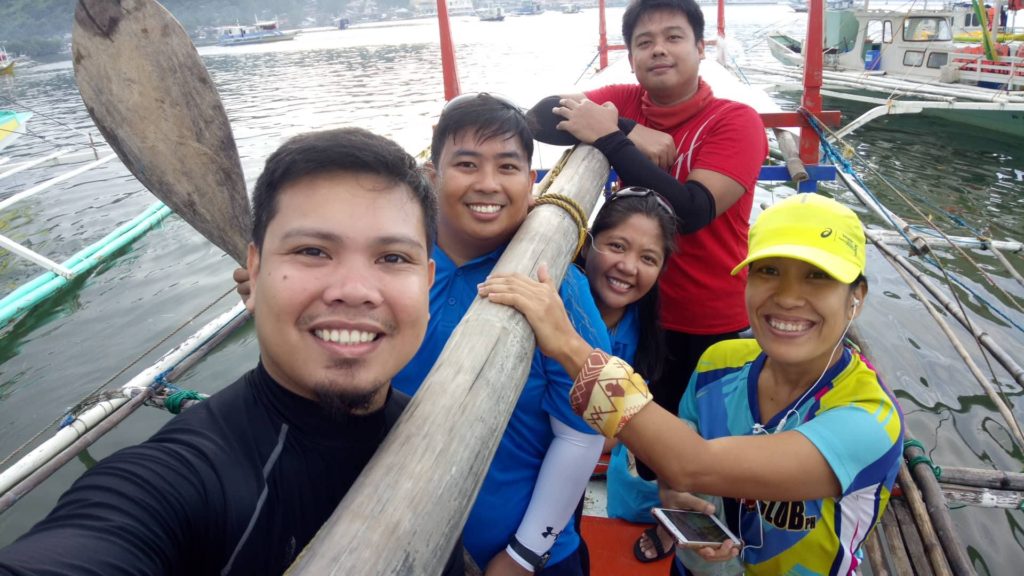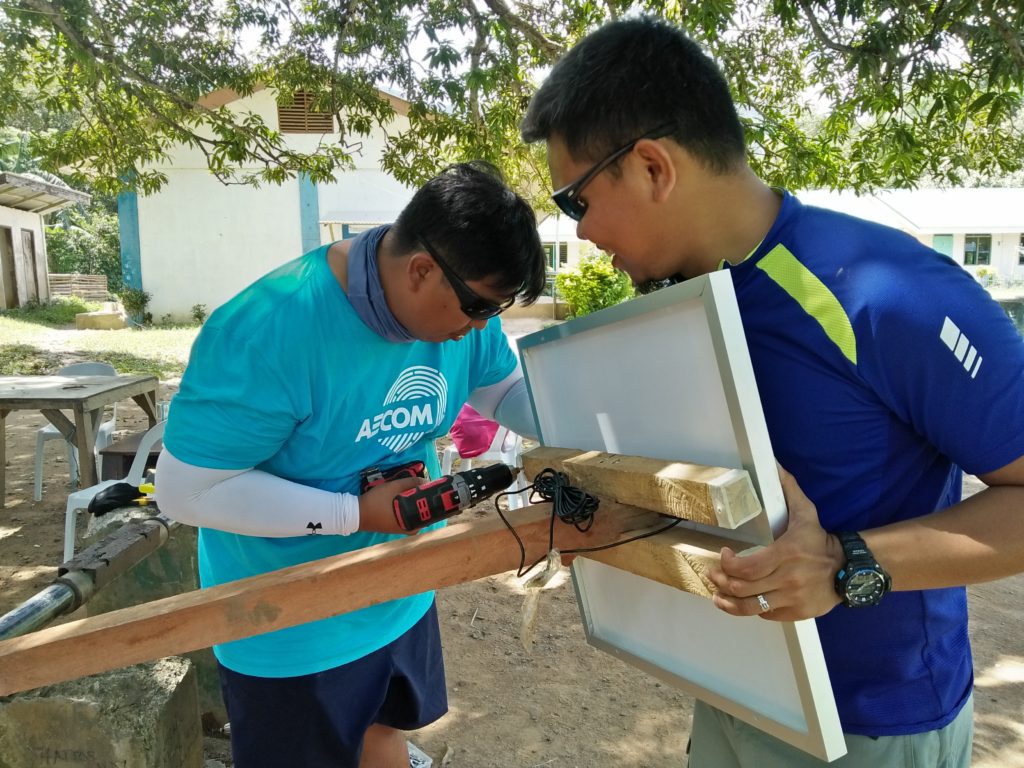Bringing light to educational facilities in the Philippines
Our recently launched Blueprint Travel Grant program supports employees making service-based trips around the world in partnership with charitable organizations. As they return from their journeys, we’re following their stories through the #AECOMBlueprint blog series.
This past summer, I partnered with Stiftung Solarenergie (StS) to install solar equipment at a school and teacher’s dormitory in the Philippines. Electrical services/networks are an inherent problem for the more than 7,100 islands that comprise the Philippines. Students often do their homework in the dark, with only the dim lights of candles or kerosene lamps to work with. Teachers find it difficult to prepare their lesson plans and grade students’ work as the night envelops the community. Productivity often pauses with the setting of the sun.
This logistical, yet natural condition, has left approximately 5,000 primary and secondary schools without access to electricity. That means 35,000 teachers and 1.1 million students have limited access to electricity (or none at all), which affects their ability to use lighting, multimedia, and information and communication technologies (ICT) learning tools in their schools. Education programs aim to create teaching environments that are more conducive to learning; whether at home, in school or within the village.
Through AECOM’s Blueprint Travel Grant program, I had the amazing opportunity to train six communities for installing two Solarized Education and Learning Facilities (SELF). Together with my wife, Kathryn, and our three field partners with StS Philippines– Russelle, JP and Jojo– we embarked on setting up more functional educational facilities in some of the most remote islands of the country.
Our journey involved a 24-hour plane ride from Philadelphia to Manila, a one hour regional plane ride from Manila to Coron, two days of community orientation/training, and then multiple “bangka” (wooden boat) expeditions ranging from one to four hours (depending on sea/weather conditions) to perform the solar equipment install.

Our first collaboration with the six communities was to educate the community leaders about solar technology. This involved a two day classroom seminar with the teachers (primary users of the lights/batteries), “barangay” captains (local town officials supporting the cause), and parents/fishermen (to perform install). The first day focused on informing the teachers of the basic principles of solar/electrical technology and proper use/maintenance of the battery and light components. The second day involved training parents/fishermen on proper installation support that would be required to make the system functional (i.e. safety, solar panel positioning, etc.).
After a four-hour boat ride, we landed on the island of Camanga. This island has the beach area inhabited by 68 households. The island only has one elementary school with three classrooms shared by students from first to sixth grade. Our team collaborated with the same community officials, parents and fishermen to erect a solar panel pole and connect the wiring/lights.
Not only were the residents elbow-to-elbow with us during the install, but they also shared their food (fresh fish and root crops) and welcomed us to hang up our hammocks for our overnight stay. During the install, the community was amazed with the use of the power drill. Fishermen wanted to borrow it in order to repair their boats and wooden home structures. In addition to performing the install, our group also conducted a solar education class with the children. The local community took great care of us and each other and were really grateful for the solar equipment project.

As a result of this volunteer program, I realized how fortunate I am to have had the opportunities in life to leverage my technical engineering knowledge, my construction background, and my value for education to hopefully open doors of opportunity for the community. I am forever grateful that AECOM and StS Philippines gave me this amazing life experience to help communities by improving education facilities using sustainable solar technology!






